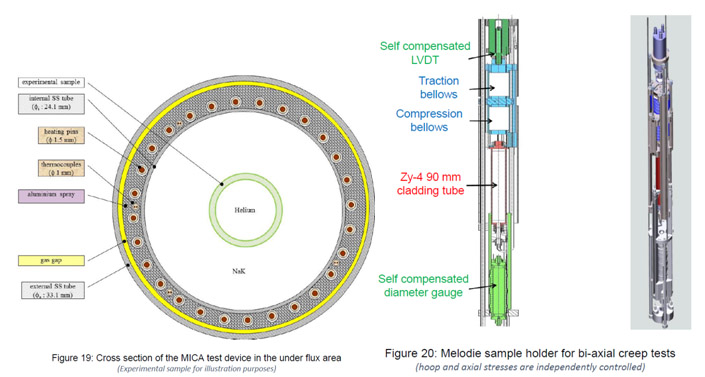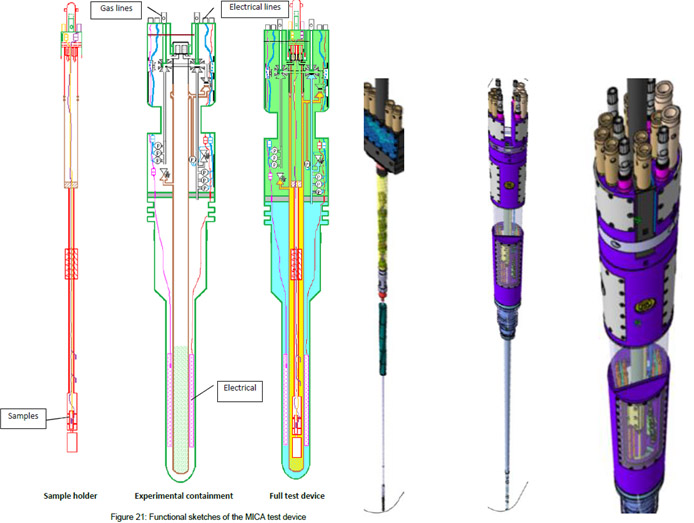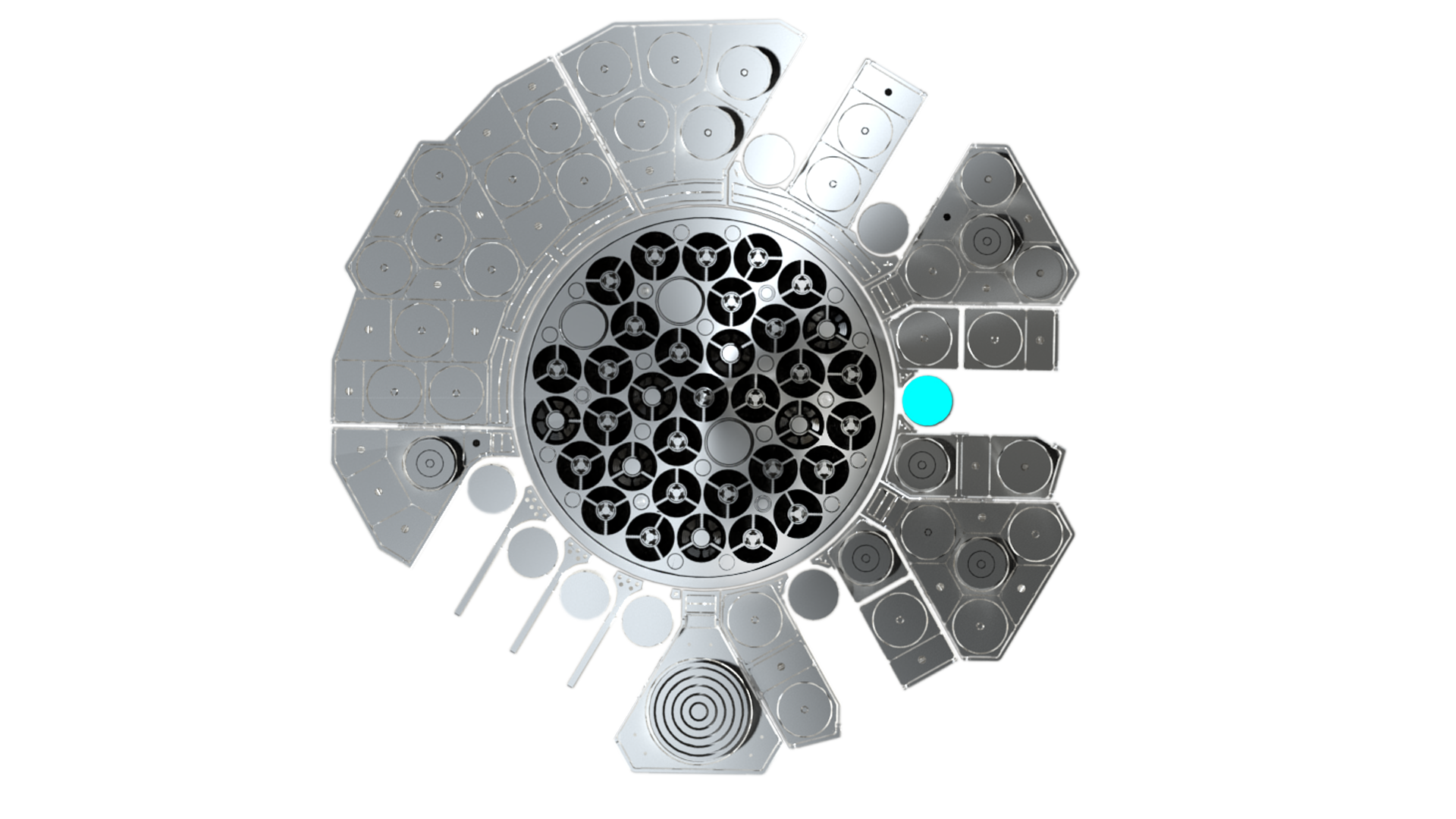
MICA
The MICA experimental device is designed to irradiate structural materials in the JHR Material Test Reactor core inside a fuel element. Its typical temperature range is between 280 and 450°C for the samples. Seven different locations are available for MICA devices.
At the end of the irradiation cycle, the device is systematically removed so operations can be performed on the reactor. It can either be stored in the reactor pool (for the following cycle), or transferred to the hot cell for unloading, recovery and sample analysis.
The neutron characteristics in the JHR Material Test Reactor core vary according to the location of the ring.
The sample holder is immersed in liquid metal (NaK eutectic), which ensures optimal thermal homogeneity thanks to its high thermal conductivity. Special care must be taken to ensure the chemical purity of the liquid metal.
Nuclear heating in the core transfers energy to the device and thus to the experimental load, which should be between 15 and 35 kW depending on the reactor power. Additional energy is provided by heating elements embedded in a sprayed aluminium coating around the internal stainless steel tube.
There are six heating elements, for a total electrical power of 18 kW, stacked to a total height of 600 mm corresponding to the height of the reactor core. These six heating elements can be independently adjusted to obtain the target temperature on the samples and to flatten the axial temperature gradient due to the axial neutron flux and gamma heating gradients.
Several thermocouples and dosimeters can be integrated into the sample holder to monitor the temperature and neutron fluence at different locations. The MICA experimental device also includes several gas pipes that are used to load mechanical samples.
It can host various sample holders ranging from very simple to more complex ones:
• Sample holders for microstructure and swelling characterisation
• Test samples to study: unloaded bending, Charpy, tensile or crack propagation phenomena
• 1D creep tests with dead weight
• 2D basic creep tests with pressurised rods
• 2D complex creep tests with a specific sample holder called MELODIE (as part of a partnership with VTT; self-compensated linear variable differential transformer sensorsprovided by IFE), which was successfully tested in the Osiris reactor.



The JHR has been designed with a full set
of experimental devices making
it possible to conduct the experiments
needed to characterise,
select and qualify new fuels and materials.
Some of these experimental devices
are capsules while others are loops,
which makes it possible to adjust
the experimental conditions in real time
to obtain even better results.









